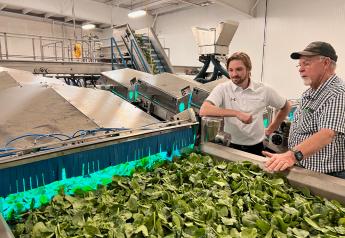Producing results: Zeroing in on the bottom line

The bottom line is this …
Fill in the blank, right? That phrase is used in everyday speech to emphasize what is especially sought after — be it a desired outcome in human behavior, a specific action you might like to see, or a preferred decision.
In business, of course, the bottom line refers to the accountant’s balance sheet. As in, how much money did an organization earn? Particularly after factoring in expenses such as rent, cost of goods and labor, to name a few of the big-ticket items. Are you profitable?
In the grocery store and in the produce aisle, the bottom line often means gross profit. Everything beyond is built upon this. Gross profit determines how many stores a chain can efficiently support and improve, how much growth can occur, how many employees to hire and much more.
More is always better. Corporate sets prices and, thus, anticipated margins. But what can a produce manager do to enhance and build additional gross profit dollars? So many things to list here: Manage a close inventory with frequent turns. Minimize shrink, and of course, maximize, or do all you can to drive sales — especially, sales that include good gross-profit items.
One example comes to mind: We had an aggressive produce manager in a higher-volume store. Her idea, midwinter, was to push high-gross profit Argentine bartlett pears as if they were on ad. (Except they weren’t). While even the busiest stores sold about eight cases a week, this manager brought in four pallets of the higher-price-point fruit on a Tuesday morning. Roughly 160 cases. Her phone lit up with something like this.
“Maureen, this is Ken, your friendly buyer down here at the warehouse. Something’s wrong. I see you ordered more pears than the entire company put together. Was that a misorder?”
“No,” Maureen said. “Gonna sell ‘em all. Trust me.”
Maureen allowed the green, import pears to sit at room temperature until Friday morning. That’s when she built two extra-large displays of the just-breaking, aromatic pears. Even though the fruit was at a much higher price point than just about anything in the department, she counted on several points: the extraordinary quality, the sweet aroma, the visual appeal (these had a beautiful, slight red blush) and the fact that she knew her customers, who tended to be not nearly as price-sensitive as some in other areas, and always hungry for something different.
In short, the “wow” factor.
By Sunday afternoon, she had all but cleaned up the inventory. And by doing so, added a hefty chunk of change to her gross profit. (Note: No focus on gross “percentage” here — as we always reminded produce managers. While superficially impressive, you don’t take percentages to the bank, only dollars).
What can produce managers do in less fortunate situations? Every week, when you build your regular ad displays, consider flanking these lesser-earners with higher-gross items. Asparagus on sale? Pair up with a bin of high-gross, colorful carrots. Onions on ad? Flank with extra-profitable 5-pound bags of Idaho potatoes.
As much as possible, think in terms of not only higher gross profit, but high gross items that are also heavier-volume items, too. Like another saying goes, “One-hundred percent of nothing is still nothing.” So, make it count. Every grocery store department head is, in effect, a business-within-a-business manager. Produce managers are among the best at delivering great results. Bottom line.







